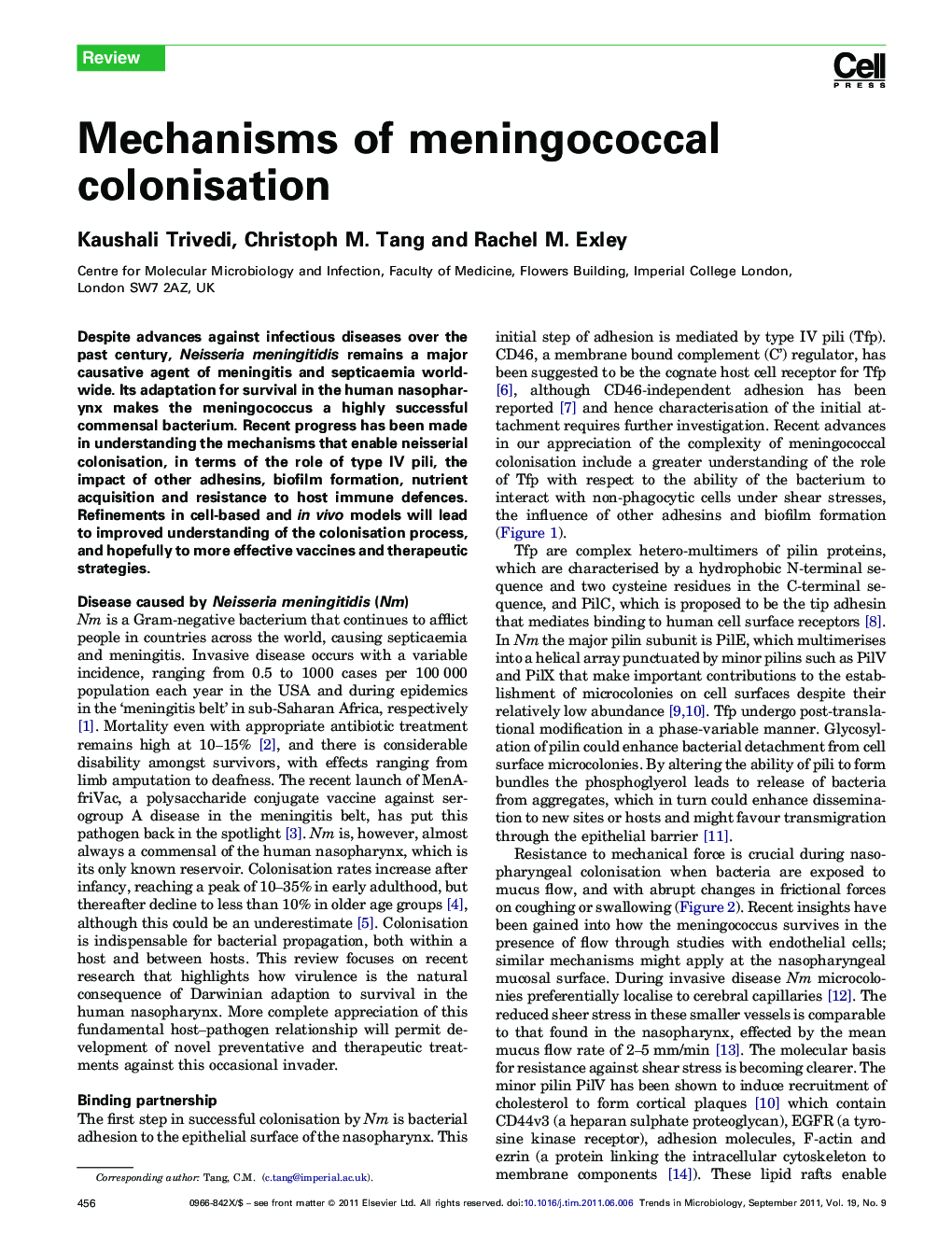| Article ID | Journal | Published Year | Pages | File Type |
|---|---|---|---|---|
| 3422128 | Trends in Microbiology | 2011 | 8 Pages |
Abstract
Despite advances against infectious diseases over the past century, Neisseria meningitidis remains a major causative agent of meningitis and septicaemia worldwide. Its adaptation for survival in the human nasopharynx makes the meningococcus a highly successful commensal bacterium. Recent progress has been made in understanding the mechanisms that enable neisserial colonisation, in terms of the role of type IV pili, the impact of other adhesins, biofilm formation, nutrient acquisition and resistance to host immune defences. Refinements in cell-based and in vivo models will lead to improved understanding of the colonisation process, and hopefully to more effective vaccines and therapeutic strategies.
Related Topics
Life Sciences
Immunology and Microbiology
Microbiology
Authors
Kaushali Trivedi, Christoph M. Tang, Rachel M. Exley,
